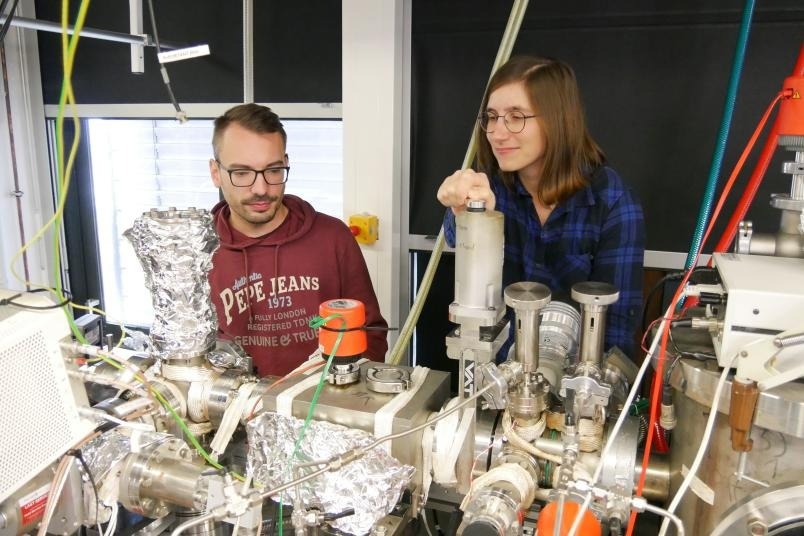A research team from Ruhr University Bochum in Germany, together with collaborators from Atlanta and Nijmegen, has investigated whether hydrogen sulfide (H2S), often seen as the "larger sibling" of water (H2O), exhibits similar bonding behaviors.

Philipp Meyer und Svenja Jäger im Labor an der Ruhr-Universität Bochum. Image Credit: Yvonne Kasper
H2S is one of the most fundamental sulfur-bearing molecules in interstellar space and plays a vital role in various biological processes in mammals. Although the chemical community has studied H2S extensively through infrared (IR) spectroscopy, there are still some uncertainties surrounding its behavior.
High-Resolution IR Spectroscopy in Superfluid Helium Nanodroplets
The method used to record H2S molecules is quite distinctive. To conduct this experiment, individual H2S molecules were embedded within superfluid helium droplets in a vacuum chamber. By adjusting the amount of H2S gas present, researchers Svenja Jäger, Philipp Meyer, and Jai Khatri from Bochum were able to statistically regulate the number of molecules captured by each helium droplet. They fine-tuned the conditions so that, on average, two molecules would be trapped together.
These helium droplets, being superfluid, have special properties that differentiate them from regular fluids. Their high thermal conductivity helps maintain the droplets and embedded molecules at nearly absolute zero (0 Kelvin). They are also transparent across a wide spectral range, from UV to far infrared, and show minimal interaction with the embedded molecules.
These qualities were essential for the experiment's success, as they enabled the team to study the interaction between two H2S molecules without interference from other molecules or thermal energy. This led to high-resolution infrared spectra that revealed not only the vibrational movements of the H2S dimer but also its rotations and tunneling splittings.
Foundation for a Better Understanding of Hydrogen Bonding
The experimental findings were further supported by theoretical calculations, enabling detailed characterization of the energy splitting of H2S molecules in both their ground and excited states. When compared to water, it was observed that H2S molecules exhibit a more flexible bonding in the ground state. However, upon excitation of one of the H2S molecules, the hydrogen bonding closely resembles that found in water.
Additionally, the researchers were able to re-evaluate and reassign vibrational signals previously published by other chemists, providing a valuable benchmark for advanced computational methods. These methods, used to predict interactions between different molecules, must be validated by experimental data to confirm their accuracy.
Studying the bonding behavior between small molecules like water and H2S significantly advances the understanding of fundamental chemistry, allowing for the refinement of theoretical models and aiding in the analysis of more complex chemical systems.
Journal Reference:
Jäger, S. et. al. (2024) On the nature of hydrogen bonding in the H2S dimer. Nature Communications. doi.org/10.1038/s41467-024-53444-6